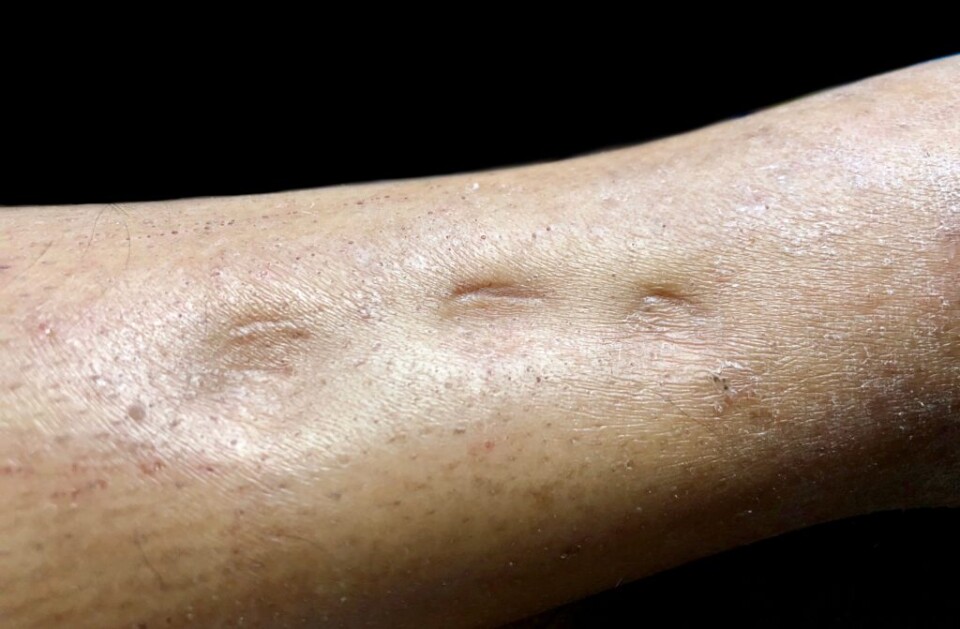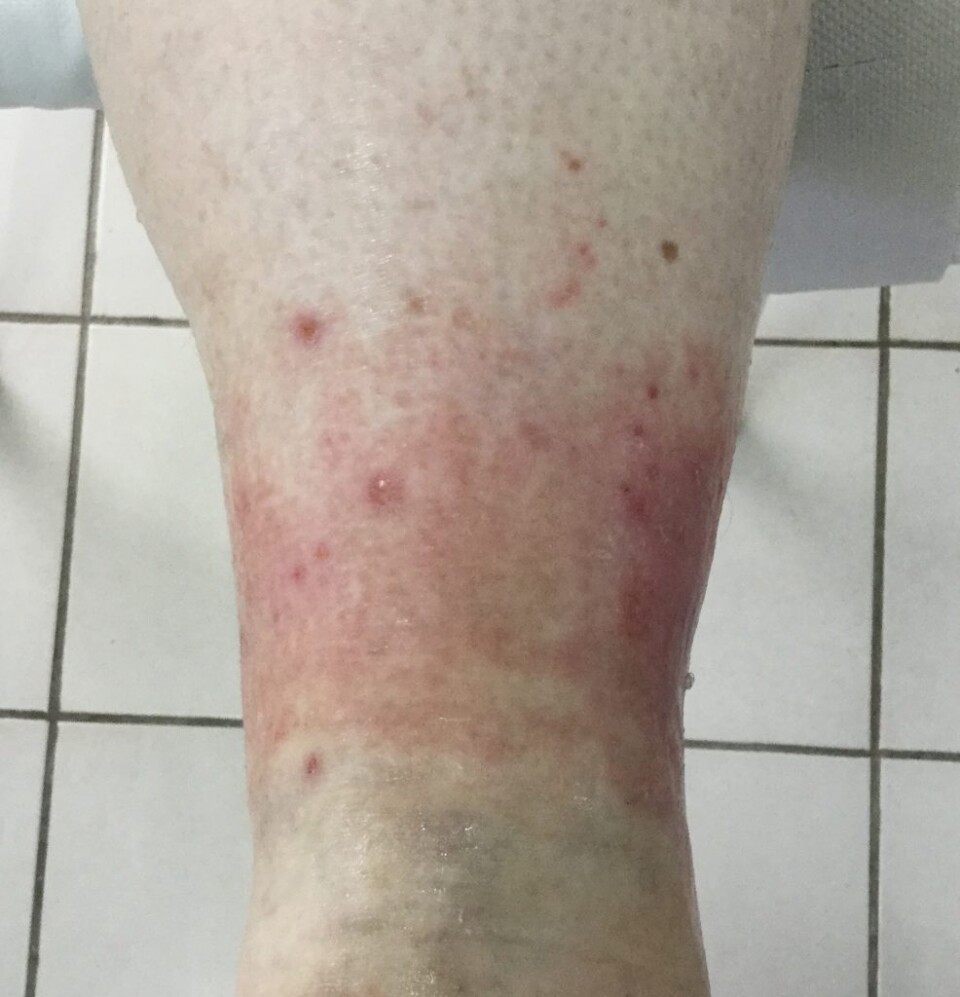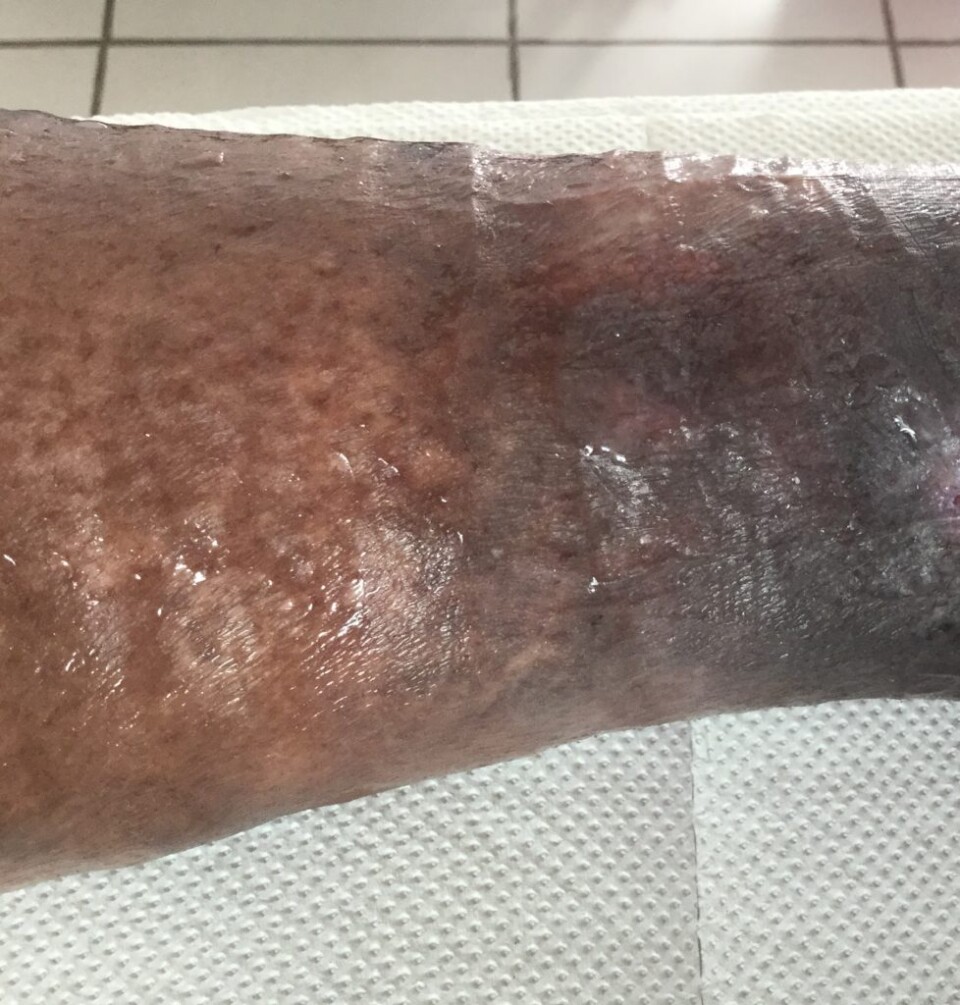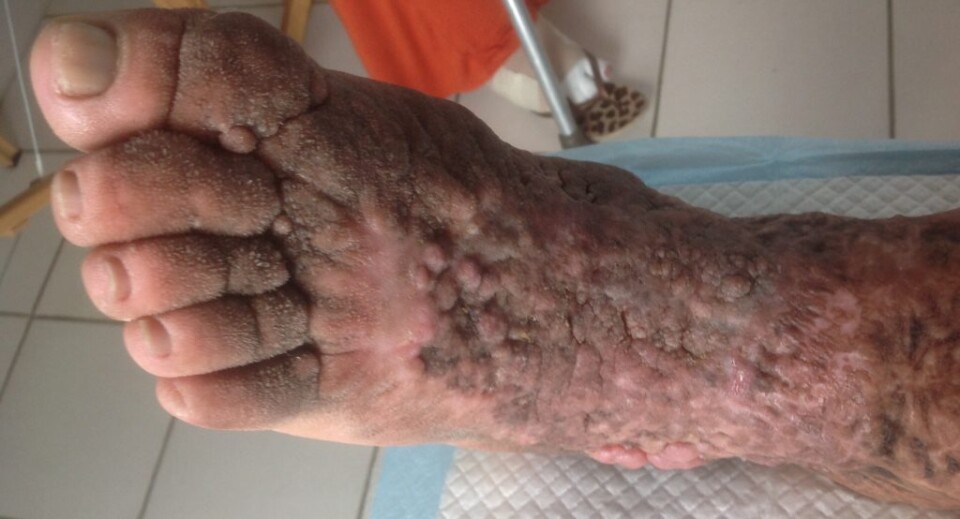Skin Changes & Lymphedema
Chronic swelling causes changes within the skin. In fact, these changes are used to diagnose, stage and correctly treat lymphedema. Let’s discuss the skin changes that can occur with lymphatic and venous insufficiency and see what they tell us about the illness.
Pitting is the ability to leave an indentation in the skin by applying pressure. This is one of the first signs of swelling that patients notice. Straps, jewelry, shoes etc. easily dent the skin and the skin does not bounce back to its original shape like before. This is known as pitting oedema. Easy-to-pit or highly pitting oedema responds well to compression but it also tends to refill very quickly. Pitting is seen in Stage 1 (reduces without compression when lying down) and Stage 2 lymphedema (remains swollen without compression even when lying down).


Cellulitis Infection is a bacterial infection of the skin. It is sometimes referred to a Erysipelas. The lymphatic system transports our immune cells that fight infection therefore poor lymphatic flow = poor immune function. Patients with lymphedema must take extra precautions with skin care and must never ignore any signs of infection such a redness, pain, heat, headache and fever. Cellulitis infection can and does occur with all stages of lymphedema. In fact, it can be the first sign that the lymphatic system is not functioning well in the affected area. Some patients are very prone to cellulitis infection and others will never experience it.
Hemosideran Staining is the dark staining of the skin by the pigmentation in the blood. It is seen in patients with venous insufficiency (poor return blood flow to the heart) and in patients with a combined insufficiency (lymphatic and venous). It is usually only seen in the lower extremity. Hemosideran staining is a permanent change to the skin. Compression and skin care can improve the look of the skin but patients cannot expect the skin colour to return to normal with treatment.


Lymphostatic Papillomatosis is characterised by many small outgrowths on the surface of the skin. It occurs after years of untreated stage 3 lymphedema and predisposes the patient to infection. Papillomatosis is very distressing for the patient and increases the risk of infection. Although it is difficult to treat, with consistent compression and skin care big improvements can be seen.